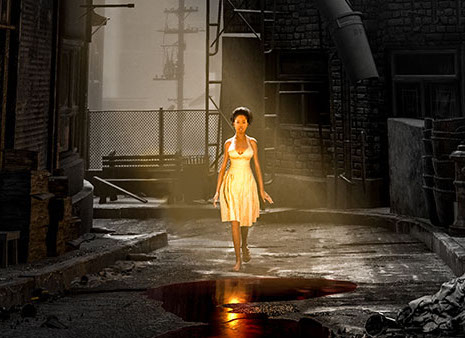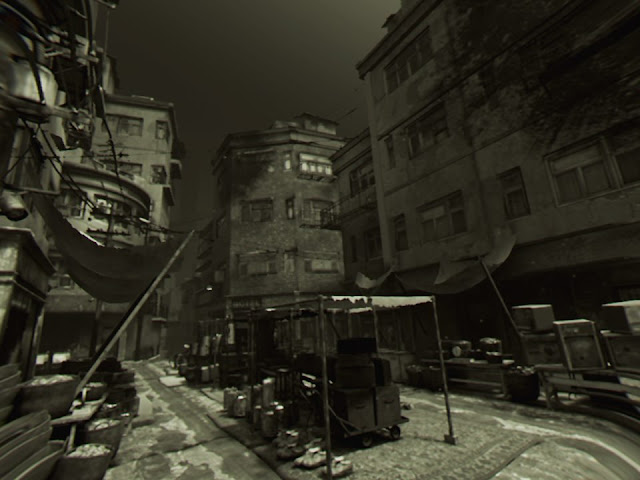Review by Matt S.
“Italian neorealism” is a phrase you’re not likely to hear unless you study film at university, or are among the most hardcore of film buffs, but it was an enormously influential movement in European cinema that informed a lot of its future development. Also known as the “Golden Age” of Italian cinema, filmmakers were particularly prolific during this period (1944-1952), and the movement’s role in Italian society itself cannot be understated, as it was a way for the country to grapple with the consequences of being on the losing end of World War 2.
Quite strongly and overtly Marxist, the films of the Italian neorealism movement centered around themes of poverty, oppression, injustice, and desperation. They were also very human stories, and tended to be quite intense, and quite depressing, to watch. For example, back when I was studying film, we had Bicycle Thieves on the list of films to watch. Vittorio De Sica’s masterpiece was one I remember for two things alone: the strikingly bleak vision of a post-war city, and the stifling, claustrophobic atmosphere of hopelessness and poverty. That film has stayed with me in the years since because it was so stark and unrelenting.
Here They Lie offers a very different narrative to what we saw in Bicycle Thieves, but it immediately grabbed my attention because the black-and-white and heavily contrasted environments reminded me so keenly of what I remember from that film; there were the same decrepit buildings, the same faded European glory. The darkly beautiful splendour of the game is oppressive, taut, and deeply frightening, simply by its sheer existence.
Goddamn monsters. #PS4share pic.twitter.com/LixbfqALQH— Miku McMikuFace (@DigitallyDownld) October 21, 2016
I cannot emphasise enough just how sinister and extreme this game truly is. You’d think the black-and-white would create a distance between reality and your experience, but if anything the opposite is true; the blacks close in around you, and you just know that the grunting, groaning and screeching that the inky darkness conceals is not good for you. The game also makes superb use of colour to really drag your attention onto something and, again, colour rarely represents warmth or a reprieve. Every new area manages to scale the grotesque imagery upwards, and as you unpack the mystery, the intensity of the narrative scales to match.
As a glorified haunted house simulator, Here They Lie’s actual moments of horror are characterised by extremes; extreme deformity, extreme violence, and there was even some of the most grotesque representations of sexuality depicted in an attempt by the developers to elicit the “flight” response from its players as frequently as possible. The actual threat level never meets the extreme horror of the visuals, as enemies tend to be quite easy to avoid or escape from, and as the game wore on I started to feel that the contrasting themes between the general art direction and gameplay elements let the game down. When so much of the game is claiming the wonderful pretentiousness of European art film, to then have so much of the exploration pulling players from one extreme shock to the other leaves a tonal dissonance within the experience that started to leave me unsure of what the game really wants to be.
Here They Lie also exposes an issue with virtual reality that another horror game deals with much better (Weeping Doll), which I’ll get to later on this week. For the most part VR is a wonderfully immersive experience that does a remarkable job in putting you right inside the horror scenario. This scales the intensity of the experience and, by extension, the effectiveness of the horror. Being able to free-look around such an incredible piece of art direction, and witness the horrors ‘first hand’, cannot be overstated in terms of the impact it has. More than a couple of times I actually found myself reflexively flinching away when witnessing something particularly gruesome, and that reflex action – the brief second that I was instinctively looking away for an avenue for escape – is authentic horror unlike anything you can experience in any other medium.
But.
But because there are physical threats designed into this game, there’s a major case of dissonance where an enemy will do something to you, and you’ll feel nothing. There’s no meaningful physical feedback, despite the VR technology promising to put you directly in the action, and this realisation completely ruins the suspension of disbelief, well beyond what happens in conventional horror games that offer no such promises. Haptic body suits and gloves can’t come quickly enough for projects like Here They Lie.
It’s also worth mentioning that some people find the game disorientating and they’re more prone to motion sickness while playing this one than other games. This doesn’t affect me as I have no issues with any VR experience, but the ability to freely wander around the world in first person using the control stick while also having 360-degree vision is not perfectly aligned in game engines just yet, and until developers have figured out a solution to it, players who get motion sickness are best advised to stick to the games where movement is more static. Other first-person games, for example, have you place a marker on a spot that you want to travel to and “teleport” there – this prevents players from using multiple movements at once (i.e. head and body via the control stick) and seems to work in keeping the incidences of motion sickness down.
Then again, Here They Lie’s developers are probably secretly happy to know that some players are experiencing motion sickness. Just another way to make them as uncomfortable as possible in what is a very transgressive game designed to make people as uncomfortable as possible.
As I said in a previous review, this VR gig is still very new, and developers will struggle with coming to terms with the technology, its strengths and weaknesses, and how it can best be used for each genre. Horror is a very natural fit for the technology, but some awkward juxtapositions between Here They Lie’s art direction and theming, and the critical lack of physical feedback after providing such a sensory overload in other ways, is perhaps an argument that the best horror experiences we’ll see on VR will be the “walking simulators” that focus on psychological fear rather than physical threats.
– Matt S.
Editor-in-Chief
Find me on Twitter: @digitallydownld










